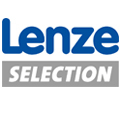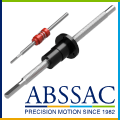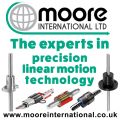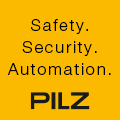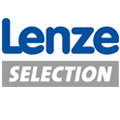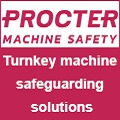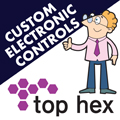
Posted to News on 21st Sep 2018, 12:11
Step-by-step guide to configuring a maxon ESCON speed controller
Amir Janjua, a Technical Engineer at maxon motor, explains how to configure an ESCON speed controller.

The ESCON is a four-quadrant PWM servo controller used to control permanent-magnet motors in a highly efficient manner. The ESCON can control motors rated up to 700W on a continuous basis and 2100W for short periods. The following provides an overview of how to configure the ESCON, based on your analog/digital input requirements and the motor being used, assuming an appropriate power supply is in use.
Once the ESCON studio software (http://escon.maxonmotor.com) has been downloaded and installed, the wiring must be set up according to the ESCON Hardware Reference (model-specific). If the studio software is downloaded, the hardware reference can be found at C:\Program Files (x86)\maxon motor ag\ESCON Servo Controller
Following the wiring set up, launch the ESCON studio, and observe the safety instructions (Fig. 1):

If the controller is connected via USB, the option will be available, alongside (USB0) in brackets, to indicate it is connected and it is not a virtual controller (Fig. 2).

Following this stage, the Start-up Wizard is where all parameters are entered with regards to the motor data, system data and I/O implementation.
Motor type
The first step is to identify the type of motor in use: EC or DC, ie brushed or brushless DC commutation (Fig. 3).

Motor data
Now the motor data can be added, including the speed constant, thermal time constant of the winding and the number of pole pairs (Fig. 4).

This information can be found in the maxon catalogue, on the data sheet for the motor, on lines 13, 19 and 29 respectively.
Although the value for the speed constant is manually stated, it is also determined during the regulation tuning process, which occurs after the initial start-up.
The number of pole pairs has an impact on the maximum speed available from the controller and is only applicable to brushless DC motors.
System data
The data for the overall system can now be configured. This is essentially the maximum permissible speed and the maximum current, which equates to the maximum torque (Fig. 5).

The maximum permissible speed may be limited by several factors, such as:
- Maximum controller speed
- Number of pole pairs
- Maximum permissible speed of motor
- Maximum continuous input speed of gearbox
- Maximum speed of load
- Speed constant of motor / voltage available
The nominal current is applicable to the motor, see line 6 of the motor data in the maxon catalogue.
The limiting factors of the maximum output current are:
- Nominal torque of motor
- Maximum output torque of gearbox
- Available current
- Maximum torque of overall system
- Ambient temperature
- Current required for acceleration/deceleration
It is typically recommended to have a maximum output current limit of twice the nominal current to account for acceleration current. This can be adjusted later if required.
Rotor position
When using the ESCON controller with a brushless DC motor, Hall sensors are required for commutation unless the sensorless ESCON is used. The Hall sensors detect the positioning of the rotor in order to fire the correct phase winding at the right time. For maxon motors, the polarity of the Hall sensors will always be according to the maxon standard; however, for third-party motors, they may be inverted (Fig. 6).

Speed sensor
Depending on whether a DC or EC motor is being used, various configuration options are available for the speed sensor (Fig. 7). They include:
- Digital incremental encoder (DC/EC)
- DC tacho (DC)
- No sensor (DC)
- Hall sensors (EC)
For low speeds and fluctuating loads, it is advised to use a digital incremental encoder for feedback. Note that the encoder must have a minimum of 16 counts per turn, which results in 64 quadcounts.

Mode of operation
The ESCON offers both speed and torque controllability, and dependant on whether a sensor is being used, the following modes are available (Fig. 8):
- Current controller
- Speed controller (closed loop)
- Speed controller (open loop), with either static or adaptive IxR compensation

When using ESCON for speed control, closed loop operation is usually the preferred choice if the motor has an encoder or hall sensors. However, open loop control can be used for certain low-complexity applications such as fans and pumps, where the load and speed remain consistent.
IxR compensation is implemented as a form of control when in open loop operation. The speed controller provides a voltage to the motor, which corresponds to the set value speed, based on the speed constant. With an increasing load, the speed would reduce. IxR compensation accounts for this by observing the terminal resistance of the motor and the current draw (Fig. 9).

Due to the linear relationship between current and torque, current control allows you to maintain the required level of torque and adjust, depending on application. Typical applications would be torque wrenches and pressing tools. No additional sensors would be required for current control.
Enable function
To enable the power stage of the ESCON, 5V must be supplied, which can be provided from the auxiliary voltage output function of the ESCON. Besides Enable, other functions can be configured too (Fig. 10):

These functions essentially allow you to just enable the power stage and to have the option to choose the direction of rotation as well.
The ESCON has up to four digital inputs, depending on how many digital outputs are utilised, which allows the enable function to be triggered by either one of the four digital inputs. However, it is important to understand that digital input 1 has a higher frequency capability, meaning if a PWM set value is used, it should be allocated to digital input 1, and the enable function should be allocated to any other pin.
Set value
The ESCON has both digital and analog inputs, meaning the set value can be processed by an option of commands (Fig. 11).

The ESCON controllers have an analogue input range of -10 to 10V. If two fixed set values are required, this can be achieved with the use of the digital inputs, one of which would maintain the initial speed, while the other input would implement the second defined speed. The option to determine whether the switch is high active or low active is also possible.
If one constant speed is required, 'fixed set value' would be the best option. This involves minimal wiring in terms of the I/O except for the enable function that requires the 5V input.
Current limit
As well as operating in current control mode, the ESCON can implement a current limit, commanded by both digital or analog signal, if operating in speed control mode.
Figure 12 shows shows the current limiting options that are available when operating in speed control mode; this will not appear in current control mode as the current limit will be set in the set value screen prior to this.

A current limit would typically be required for protection purposes for the motor, gearbox or even the drive load.
Speed ramp
As the ESCON controller is a four-quadrant controller, it means a torque can be applied in the direction opposite to motion. The acceleration and deceleration can be defined to achieve the final speed within a certain time frame (Fig. 13).

When defining the acceleration ramp, it is important to consider numerous factors such as the available current and the inertia of the load. The torque can be defined as the product of the moment of inertia of the load and the acceleration. Consider having a low acceleration ramp and incrementally increase accordingly.
During deceleration, be aware of the reversed energy that could go back into the controller/power supply. If the controller/power supply does not have the capacitance to absorb the energy, there will be a trip. The following graph (Fig. 14) shows the voltage increase when a load is required to decelerate.

The graph shows that a constant supply of 24V was increased to 34V because of the reversed energy being sent back to the controller/power supply. The deceleration was defined at 10000rpm/s.
If the deceleration rate cannot be reduced, along with the inertia of the load, it would be worth implementing additional capacitors or increasing the power supply (Fig. 15).

Offset
Offset is where the output differs from the set value by a pre-defined amount. There are various methods of configuration for offset, such as:
- Analog offset
- PWM offset
- RC servo offset
- Fixed offset
Digital inputs and outputs
The ESCON digital inputs and outputs can be configured to suit the application (Fig. 16).

Digital inputs
In addition to 'enable' and/or 'direction' the following digital inputs are available:
Stop
- Motor decelerates with a defined ramp to a halt
- High or low active polarity can be configured for the Stop function
PWM set value
Set value is defined by a fixed frequency and amplitude. The change in set value is achieved by essentially adjusting the variation of the duty cycle of 10-90 per cent. If PWM set value is used, it must be configured to digital input 1.
Digital outputs
If digital I/O 3 and 4 are not used as inputs, the following outputs can be configured:
Ready
- Signal used to transmit ready/fault status to a superior control system
- High or low active polarity can be configured for the Ready function
Speed comparator / Current comparator
Digital output is set in accordance to the actual value of speed/current (Fig. 17).

Various modes available include:
l{Limit: Once the pre-defined value is reached~~~ digital output is set,Range: Once the pre-defined value is within a set range~~~ the digital output is set,Deviation: Once the pre-defined value is within the set deviance~~~ the digital output is set (Note: Deviation is only available for current comparator mode if the controller is in current controller mode)
Commutation frequency
Digital output 4 also has the functionality to show the commutation frequency, providing a brushless DC motor is being used.
Analog outputs
The ESCON controller offers two analog outputs, with a resolution of 12 bits, a range of -4 to +4V and a current rating of up to 1mA.
There are various functions which can be offered; these are typically used as a monitoring tool for the following:
- Actual current (Actual current averaged)
- Actual speed (Actual speed averaged)
- Demand speed and demand current
- Temperature power stage
- Fixed value
Once the appropriate output has been selected, the scaling can then be configured, bearing in mind the output goes up to 4V (Fig. 18).

Conclusion
The maxon ESCON is a powerful, easy-to-use and adaptable speed controller. Functionalities of the multiple I/O provide versatility across a broad range of applications. When configuring the ESCON, it is necessary to consider the system, as opposed to just the motor, as there may be a weaker link within the complete drive system that may need accounting for from a safety point of view.
For more information about the ESCON (pictured blow), as well as other maxon products, go to www.maxonmotor.co.uk.







